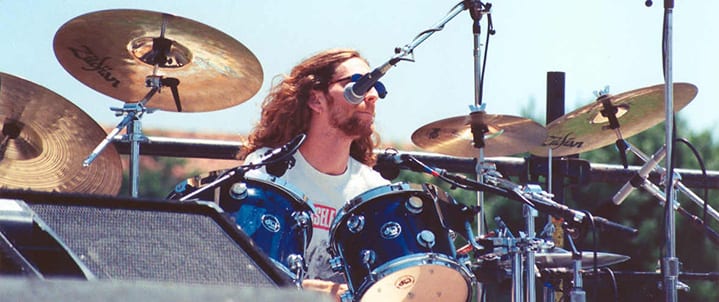 So you’ve made the decision that you want to learn to play the drums. Perhaps you’ve always been drawn to the drums, or you think your child would enjoy learning how to play the drums. Either way, the drums are a fun instrument to play, and are relatively easy to learn.
So you’ve made the decision that you want to learn to play the drums. Perhaps you’ve always been drawn to the drums, or you think your child would enjoy learning how to play the drums. Either way, the drums are a fun instrument to play, and are relatively easy to learn.
For many people, drumming is a practice in perseverance. While drumming doesn’t come naturally to some people, if that’s not necessarily the case for you, don’t worry! The easiest and quickest way to learn how to play the drums is to take private lessons, familiarize yourself with the kit, and to practice regularly. It may take only a few lessons to learn the basics of drumming, but it’s important to remember that it can take many years to master the drums. Most professional drummers have upwards of 15 to 20 years of experience behind the kit, and even then, they still practice on a regular basis.
Getting Familiar With the Drum Kit
Before you ever begin playing, you’ll need to know what each piece of the instrument does. Because the drum set is made up of several different elements and pieces, learning to play will require knowledge of each drum piece. If you’re an older student who is interested in learning the drums, we suggest checking out some resources on the Internet to first get acquainted with what a drum kit looks like, and what each drum and cymbal does.
Understanding this is like understanding how to drive a car. Before you ever step foot into a car to drive, you probably know that the brake stops the car and the gas makes the car go. You also know that the steering wheel is required to move the car in the direction you want. If you are learning to drive clutch, you’ll probably receive a lesson on what each gear is capable of doing. The same goes for learning how to play drums. This step can be done on your own, in the privacy of your own home, without any real financial hardship. You can read about the drums and drum kits online, even before your first drum lesson.
Find a Drum Teacher
Next, is time to get to playing! When you’re ready to learn the basics, private instruction is the quickest and easiest way to learn how to play the drums. But even then, there’s still work to be done – learning how to play the drums can be easy, but mastering the drums is a life-long commitment!
At your first private lesson, your teacher will help you get familiar with the kit. He or she will teach you about drum posture, and will help you find a setup that is comfortable for you. Not every drum kit will feel “right” to every player. Each musician has their own preferences and styles. Some like to sit high up, while others like to be seated low on the kit. Some prefer the drums spread far apart, while others like to have the kit situated close together for easy access. This is a preferences that will reveal itself in time. In this first lesson you also might review the basics of rhythm and reading music.
As you progress through private instruction, your drum instructor will help you find your own personal style. After a few lessons, you can even “jam” with your teacher or a fellow drumming student! Soon you’ll be incorporating fills, dynamics, and other techniques into your playing.
Practice at Home
You’ll learn how to play the drums effectively with a teacher, but really learning to master the instrument will take hours of hard work and practice in between those lessons – that’s when the magic happens! By practicing and fine-tuning what you learn during your lesson, you’ll be able to progress quickly and move onto more advanced techniques – and that’s where the fun really begins!
Photo by Elvert Barnes
Megan L.

